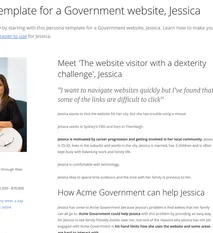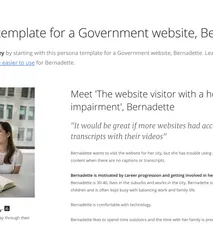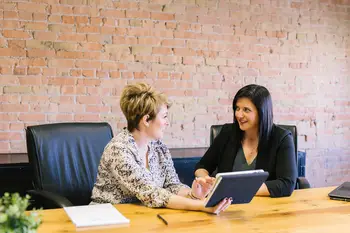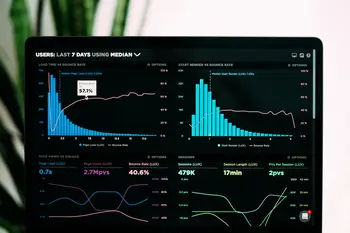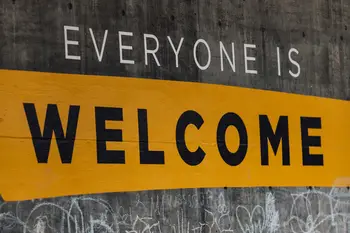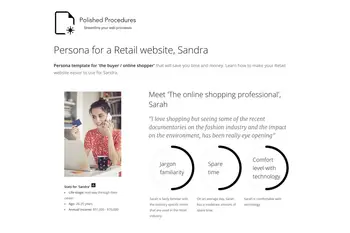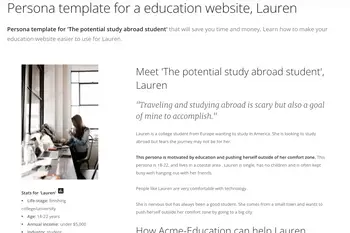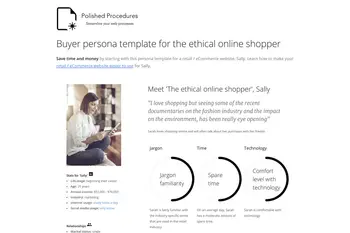
- Read time: 3 mins
- Tech level: low
- Key point: accessibility for people with hearing impairments, helps to make your website more inclusive and means more people visiting your website
- Key resource: go straight to the Accessibility Statement Generator.
Highlights
- Understanding Deaf Culture: Respect and acknowledge deaf culture by using person-first language. Create personas of people living with disability to help with this.
- Providing Closed Captions: Add closed captions to videos and audio content to help deaf individuals understand and engage with the content.
- Offering Transcripts: Provide written versions of audio content, such as podcasts or webinars, to make it accessible for those who cannot hear or understand the audio.
- Using Visual Aids: Use images, infographics, and diagrams to supplement written content and make it more engaging and easy to understand for all individuals, including those who are deaf or hard of hearing.
- Providing Contact Options: Offer accessible contact options such as video relay service, text-based chat, or email specifically for deaf customers to ensure easy communication.
Websites should be accessible to all
Websites should be accessible to all people, not just those who are deaf or hard of hearing, for several reasons:
- Inclusivity: Making your website accessible to all individuals, regardless of their abilities, promotes inclusivity. It ensures that everyone has equal access to information, products, and services, regardless of their physical or cognitive abilities.
- Legal Requirements: In many countries, there are legal requirements and regulations in place that mandate website accessibility. By making your website accessible, you comply with these laws and avoid potential legal issues.
- Better User Experience: When your website is accessible, it provides a better user experience for all visitors. This includes individuals with disabilities, as well as those without. A user-friendly website that is easy to navigate and understand benefits everyone.
- Increased Reach and Engagement: By making your website accessible, you expand your potential audience and increase engagement. People with disabilities make up a significant portion of the population, and by catering to their needs, you tap into a larger market.
- Positive Brand Image: Creating an accessible website demonstrates your commitment to diversity, inclusivity, and social responsibility. It enhances your brand image and reputation, showing that you value and respect all individuals.
In summary, making your website accessible to all people, not just those who are deaf or hard of hearing, is essential for inclusivity, legal compliance, user experience, increased reach, and a positive brand image.
Reasons to focus on accessibility for people with hearing impairments
There may be instances where you want to test a websites from particular points of view e.g. from the point of view of someone with hearing impairments. One example of this is when you are creating user stories.
User stories
A user story is a tool used in software development to describe a feature or functionality from the perspective of an end user. In the context of someone with hearing challenges, a user story could be:
"As a person with hearing challenges, I want to be able to access and understand the content on a website, so that I can fully engage with the information and services provided."
This user story highlights the need for websites to be accessible and inclusive for individuals with hearing challenges. It emphasizes the importance of features such as closed captions, transcripts, visual aids, and accessible contact options, which can help individuals with hearing challenges to navigate and understand the content on a website. By addressing these needs, websites can ensure that all users, regardless of their hearing abilities, can have a positive and inclusive user experience.
A user story of a person that has hearing challenges
In the present era of technology, it's imperative for any company or institution to have a website that everyone can easily access. This involves ensuring that your website is user-friendly for individuals who are deaf or have difficulty in hearing.
By implementing a few simple techniques, you can make your website more inclusive and welcoming to the deaf community.
Understanding Deaf Culture
Before making any changes to your website, it's important to have a basic understanding of deaf culture. Deaf culture is a unique community with its own language, customs, and traditions. It's important to respect and acknowledge this culture when making your website accessible. This includes using person-first language, which puts the person before their disability (e.g. "person who is deaf" instead of "deaf person").
Providing Closed Captions
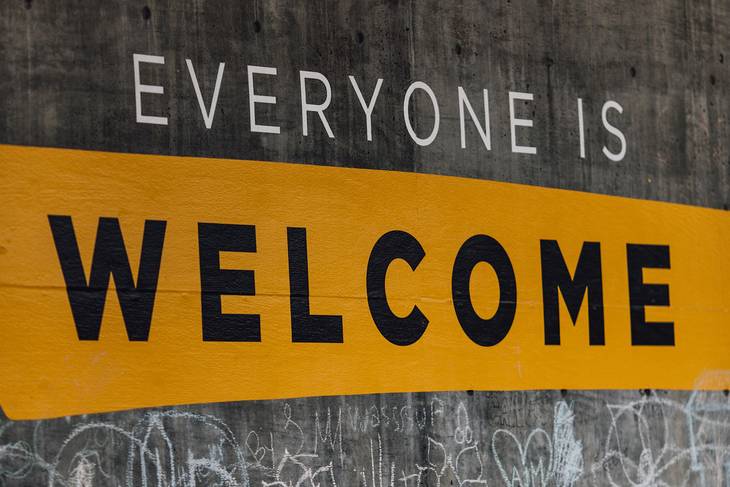
Photo by Katie Moum on Unsplash
One of the most important ways to make your website accessible for deaf people is by providing closed captions for any videos or audio content. Closed captions are text that appears on the screen, providing a written version of the dialogue and sound effects. This allows deaf individuals to fully understand and engage with your content. There are many tools and software available to help you add closed captions to your videos, making it a simple and effective way to make your website more deaf-friendly.
Offering Transcripts
In addition to closed captions, it's also helpful to provide transcripts for any audio content on your website. Transcripts are written versions of the audio content, making it accessible for those who may not be able to hear or understand the audio. This is especially important for podcasts or webinars, as it allows deaf individuals to fully participate and engage with the content.
Using Visual Aids
Another way to make your website more accessible for deaf people is by using visual aids to convey information. This can include using images, infographics, and diagrams to supplement written content. Visual aids can help to break up large blocks of text and make the information more engaging and easy to understand for all individuals, including those who are deaf or hard of hearing.
Providing contact options

- Photo by Tetiana SHYSHKINA on Unsplash
When it comes to customer service, it's important to provide contact options that are accessible for deaf individuals. This can include offering a video relay service, which allows deaf individuals to communicate with a hearing person through a sign language interpreter. You can also provide a text-based chat option or an email address specifically for deaf customers. By offering a variety of contact options, you can ensure that all individuals can easily reach out to your business or organization.
When it comes to customer service, it's important to provide contact options that are accessible for deaf individuals. This can include offering a video relay service, which allows deaf individuals to communicate with a hearing person through a sign language interpreter. You can also provide a text-based chat option or an email address specifically for deaf customers. By offering a variety of contact options, you can ensure that all individuals can easily reach out to your business or organization.
Use personas to help test your website
Personas of the people that are actually visiting your website, help to bring your target audience to life. Create personas of people living with disability
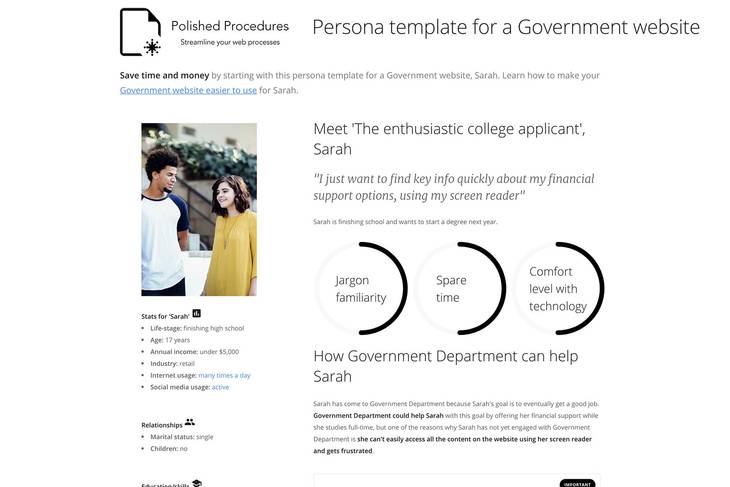
Persona templates of people with disabilities / impairments
See the three latest personas created by our persona generator tool.
Wrapping up
By implementing these techniques, you can make your website more accessible for deaf people and hard of hearing individuals. This not only shows that you value and respect the deaf community, but it also opens up your website to a larger audience. By creating a deaf-friendly website, you can help to promote inclusivity and diversity in the digital world. Have you made any changes to your website to make it more accessible for deaf individuals?



